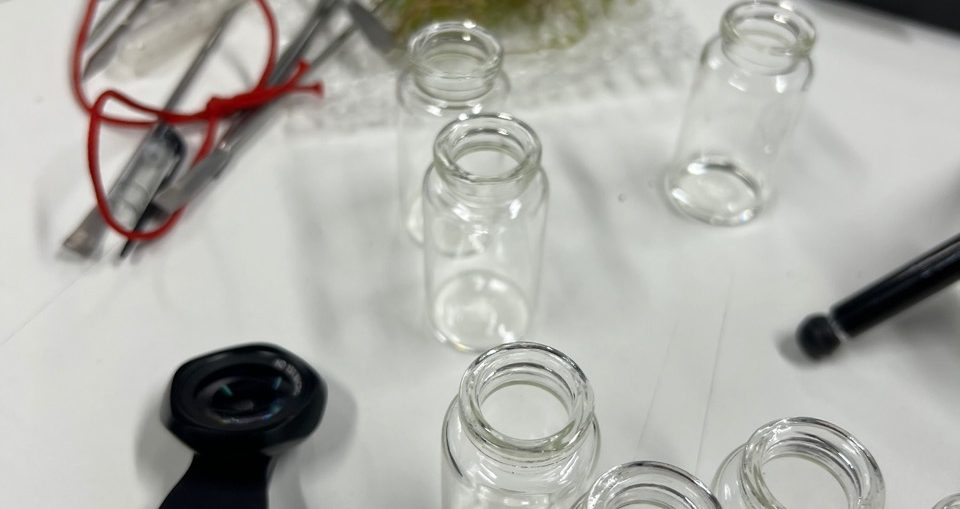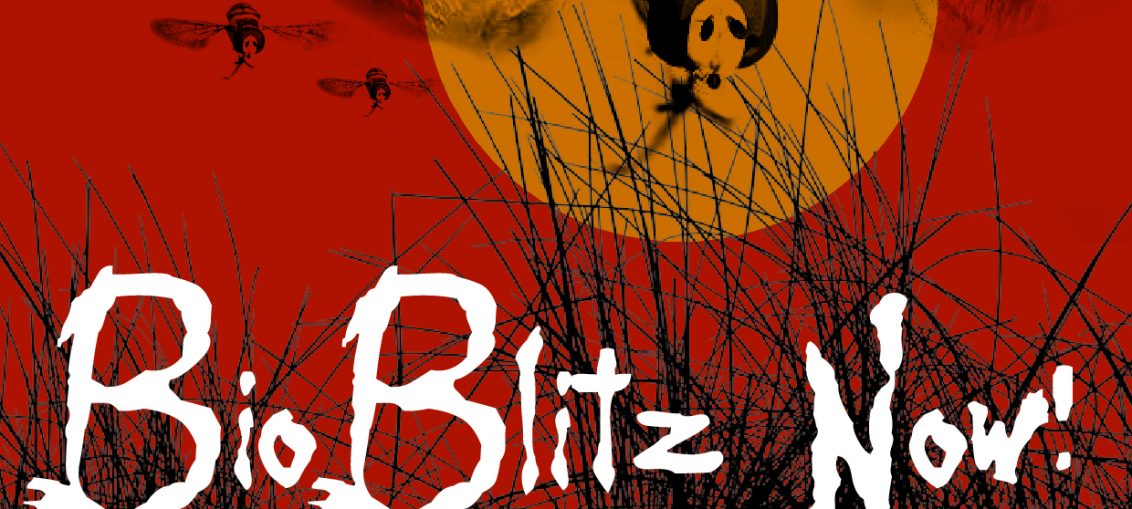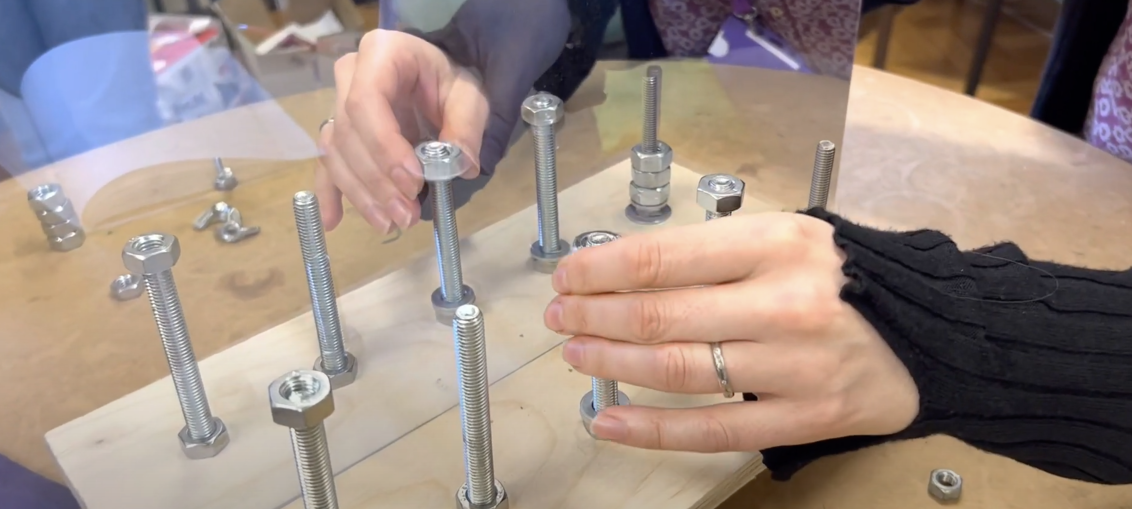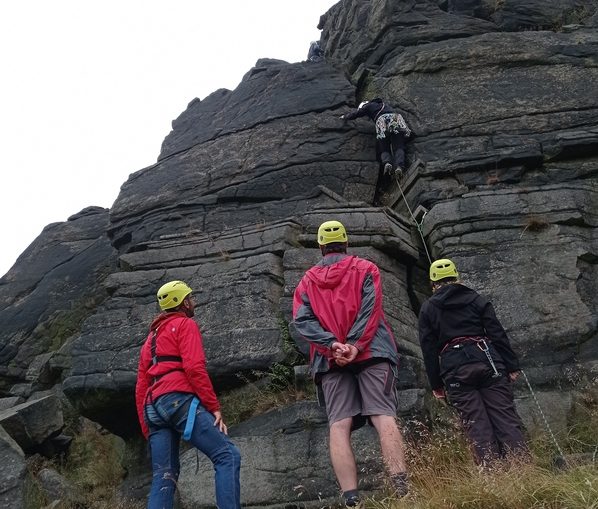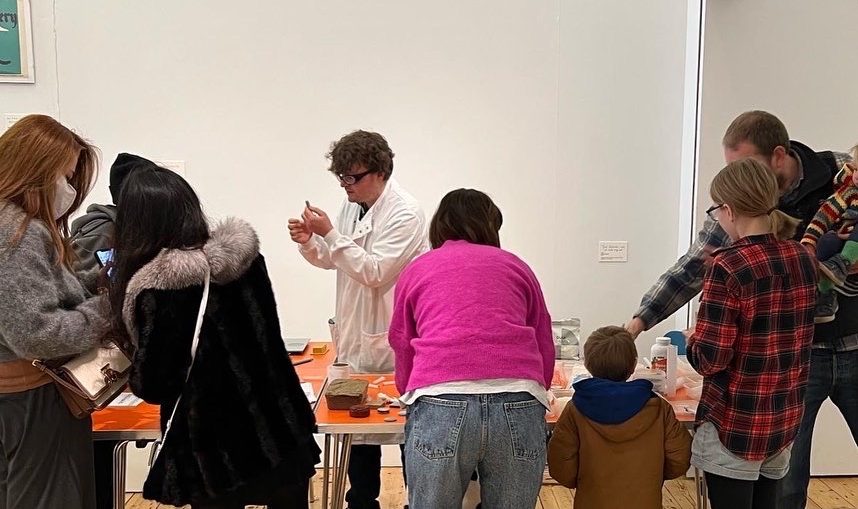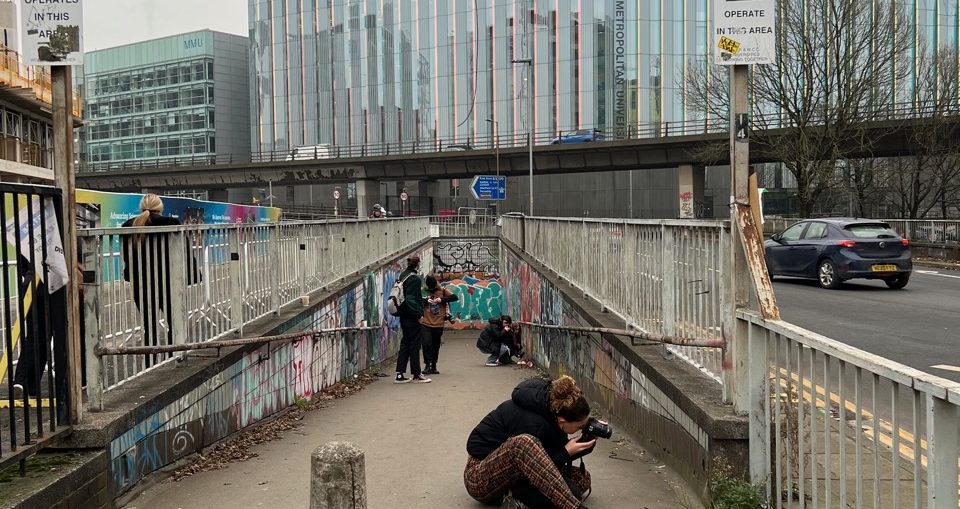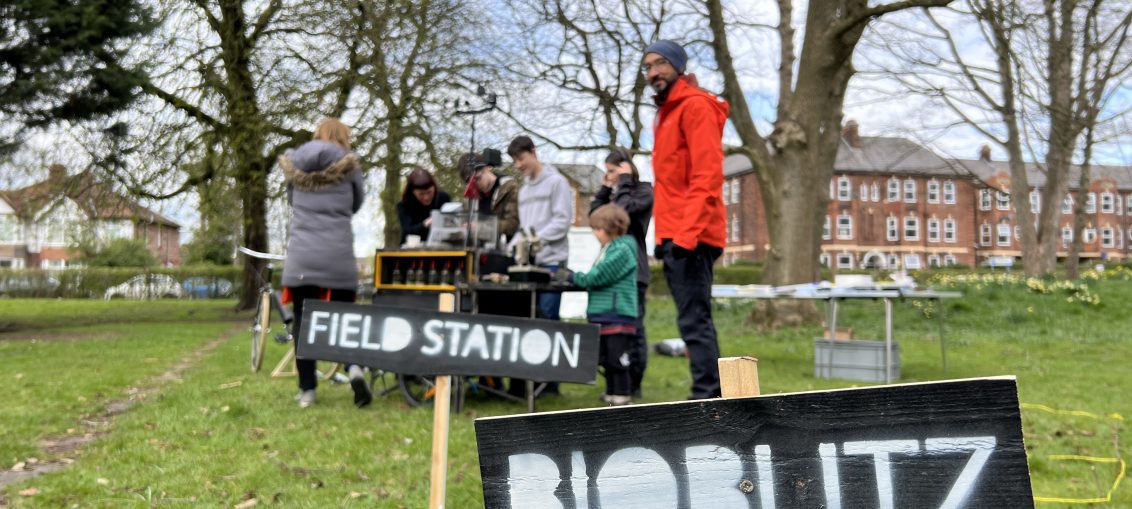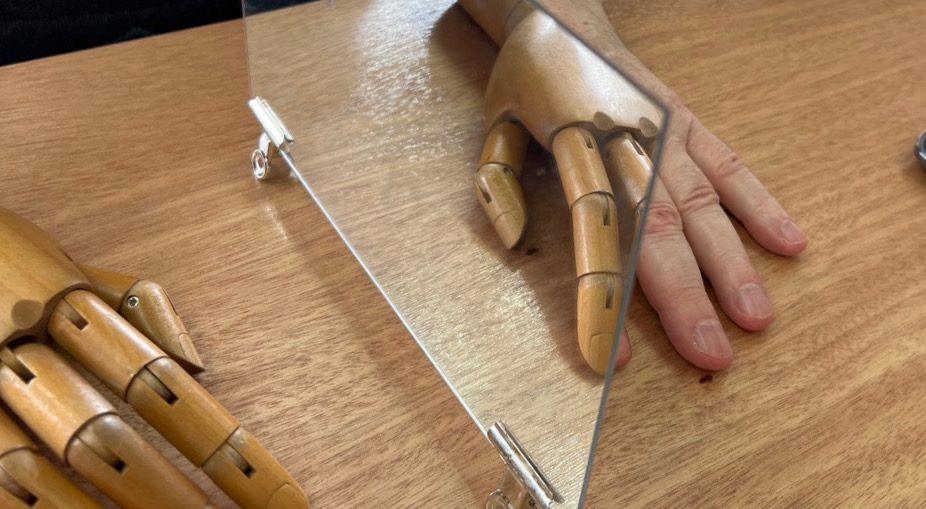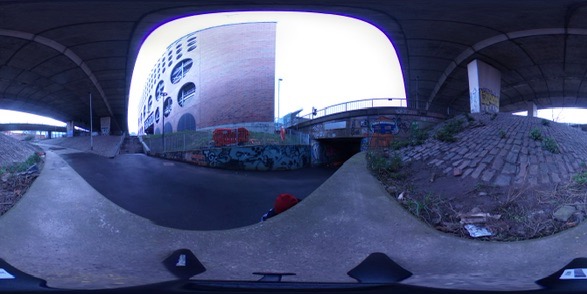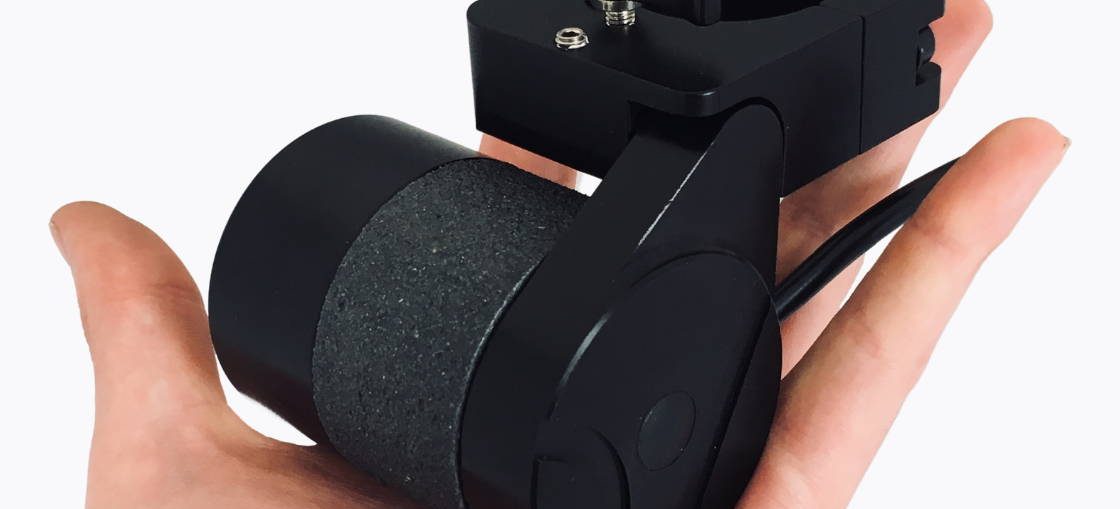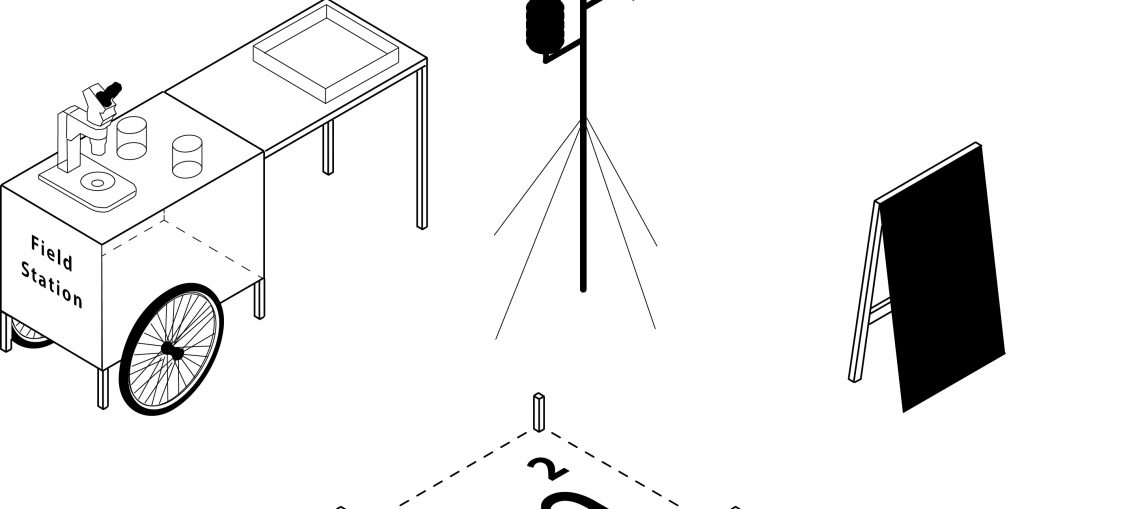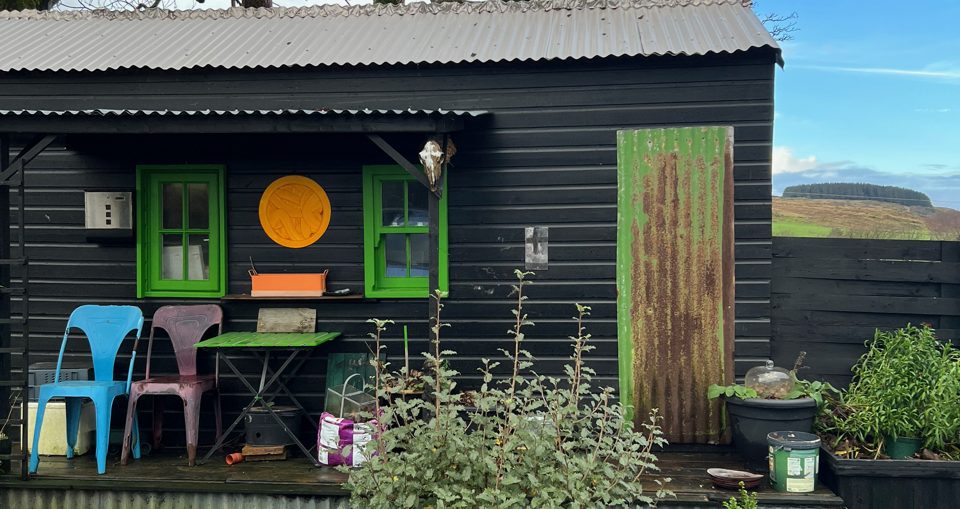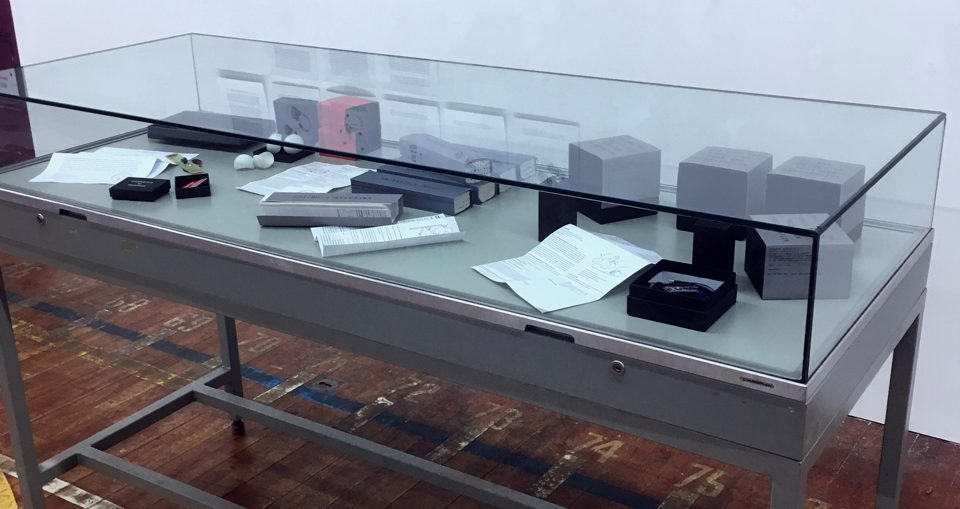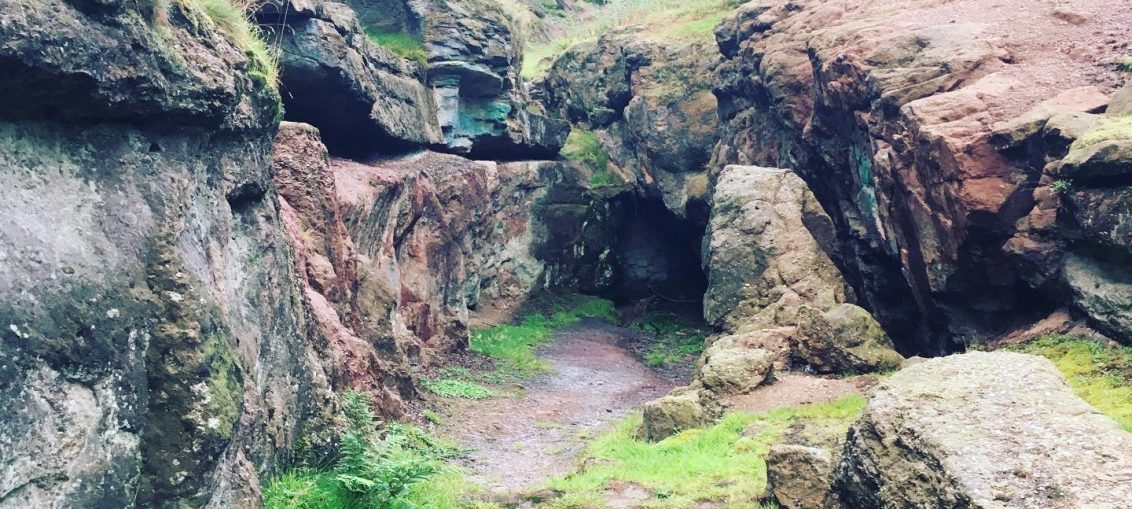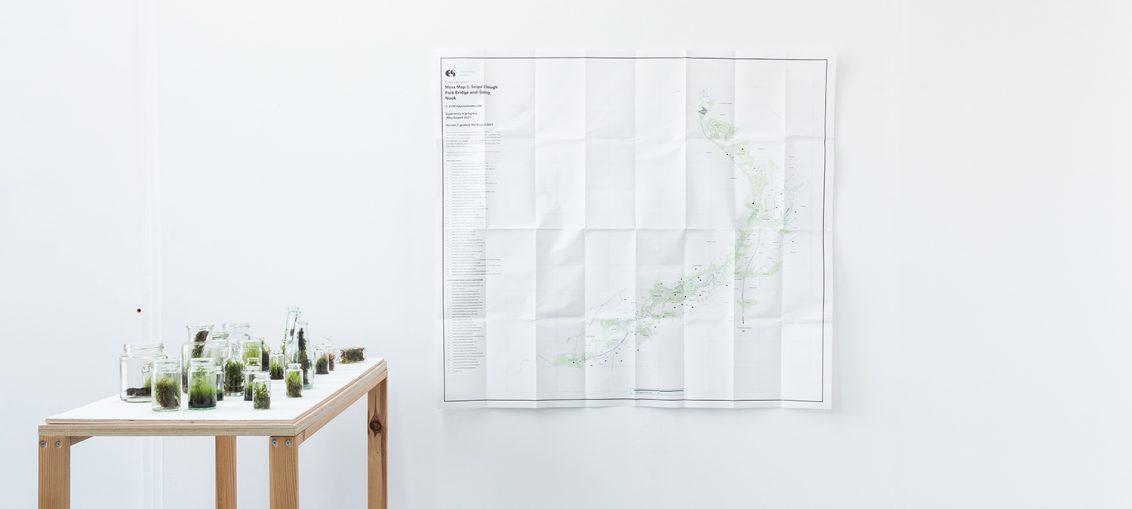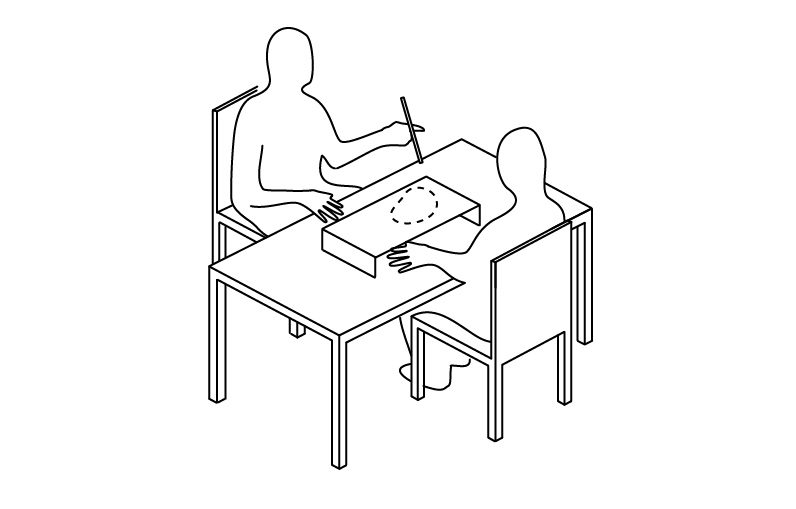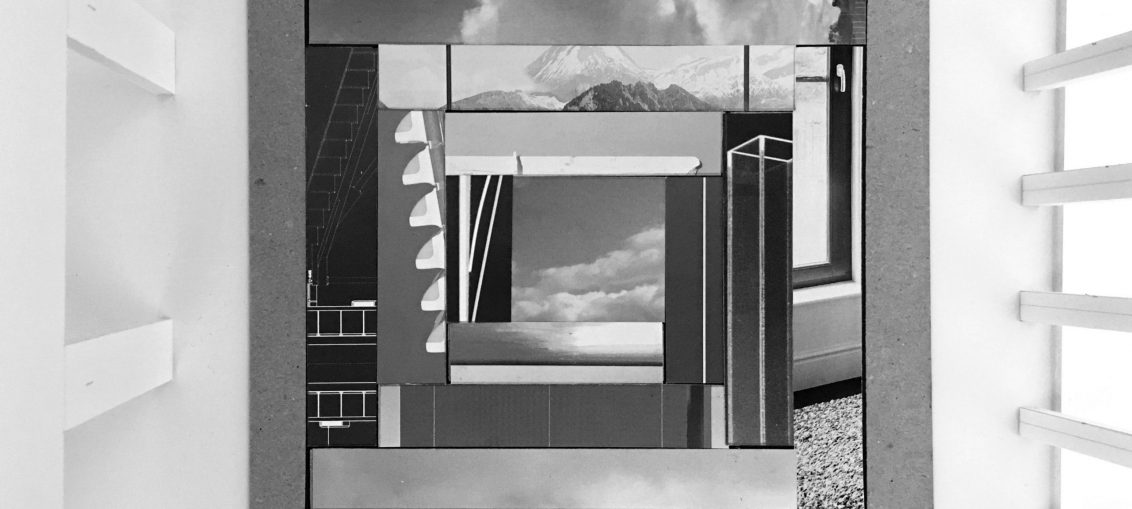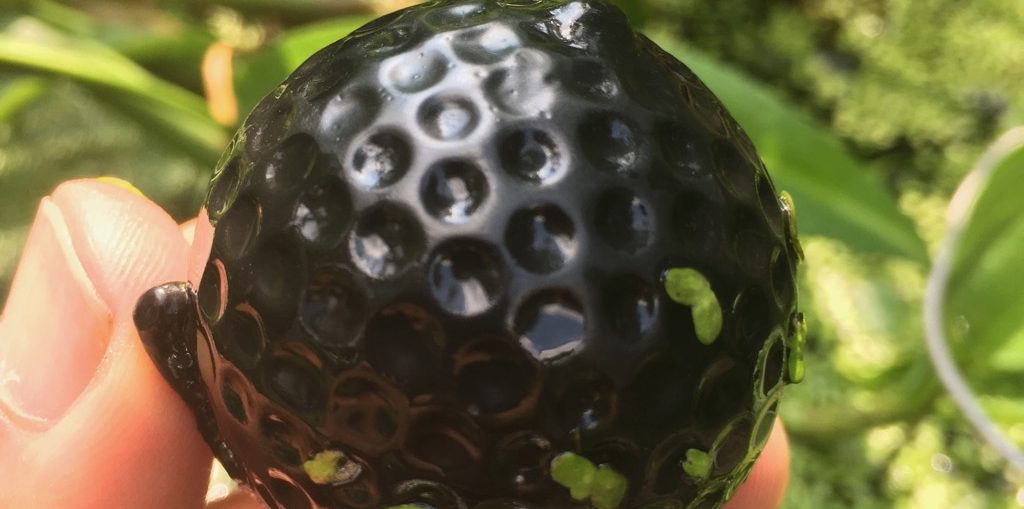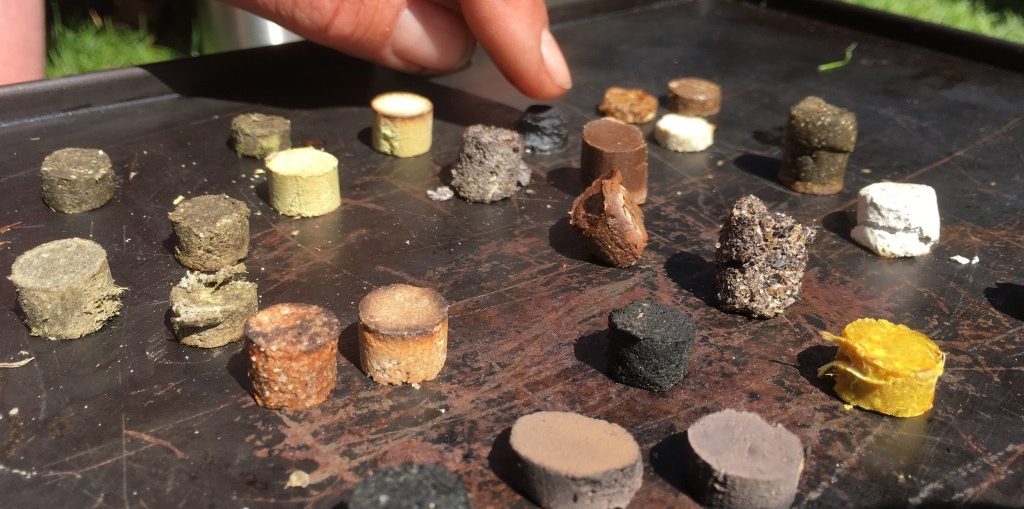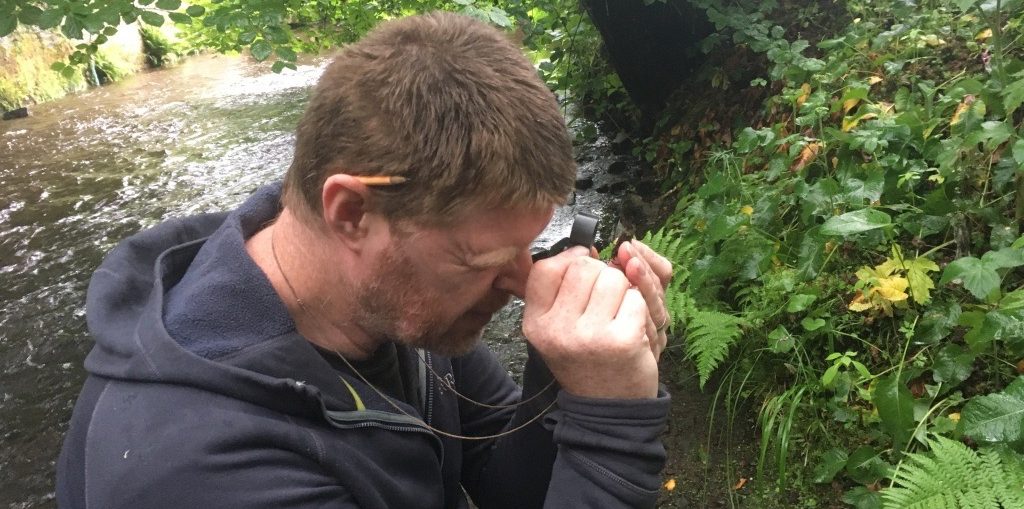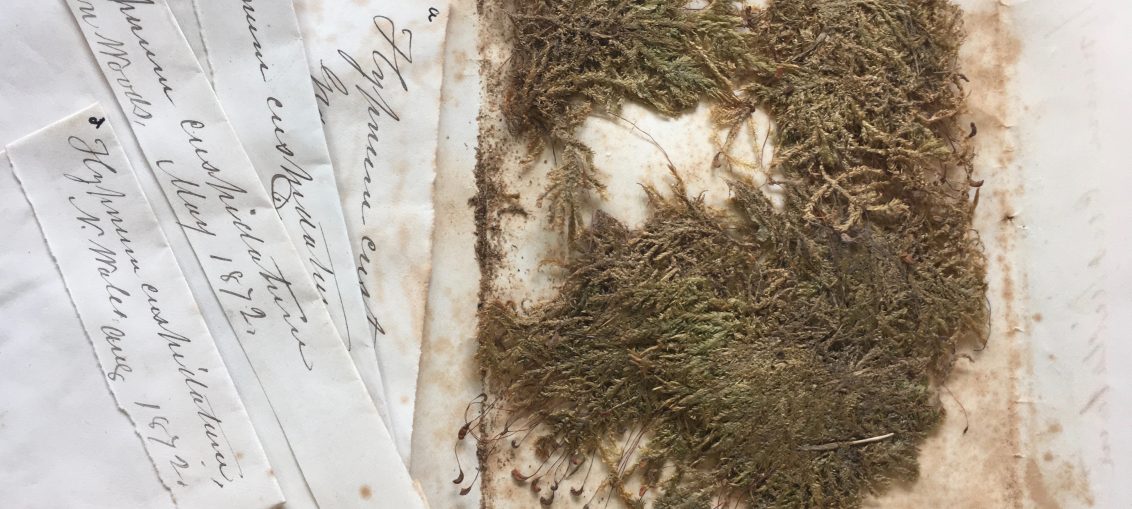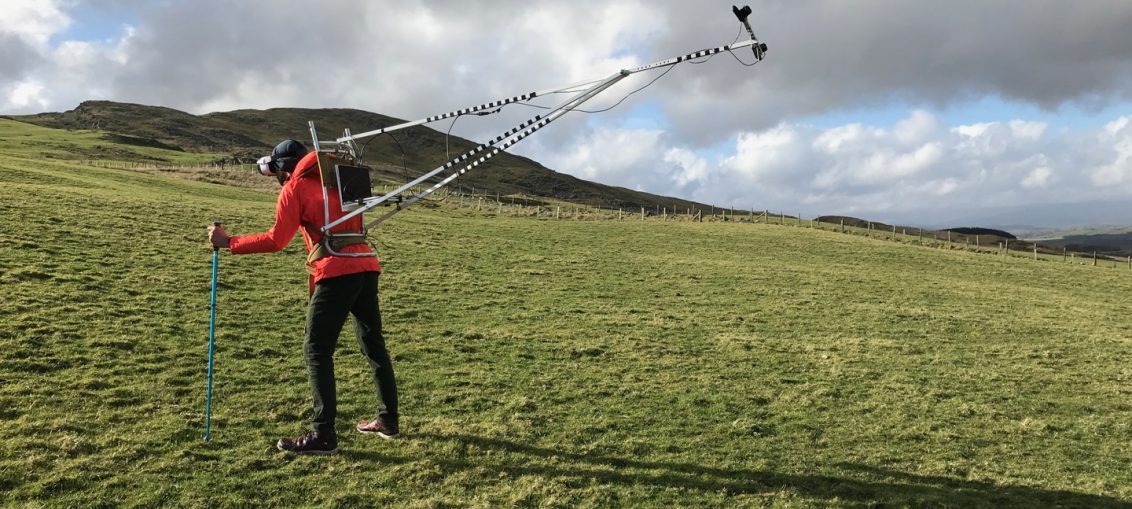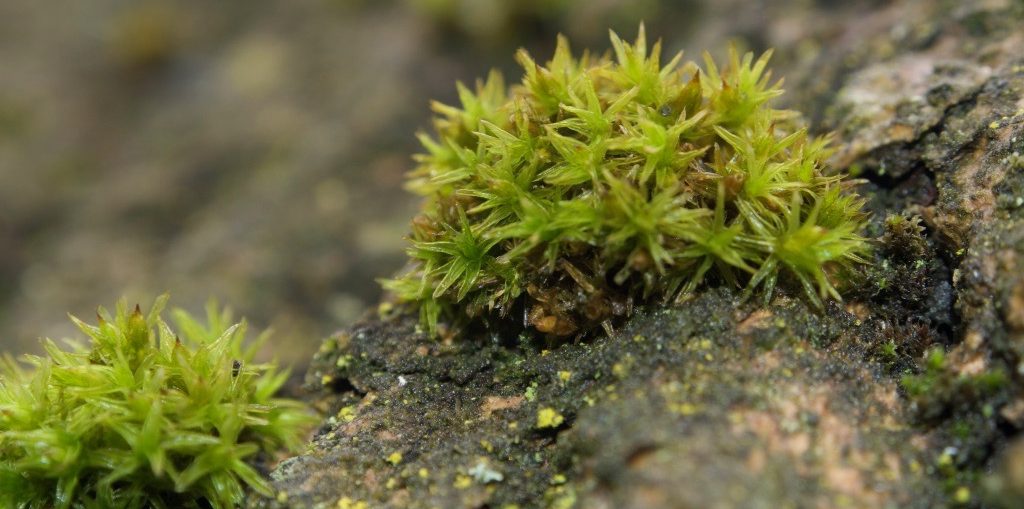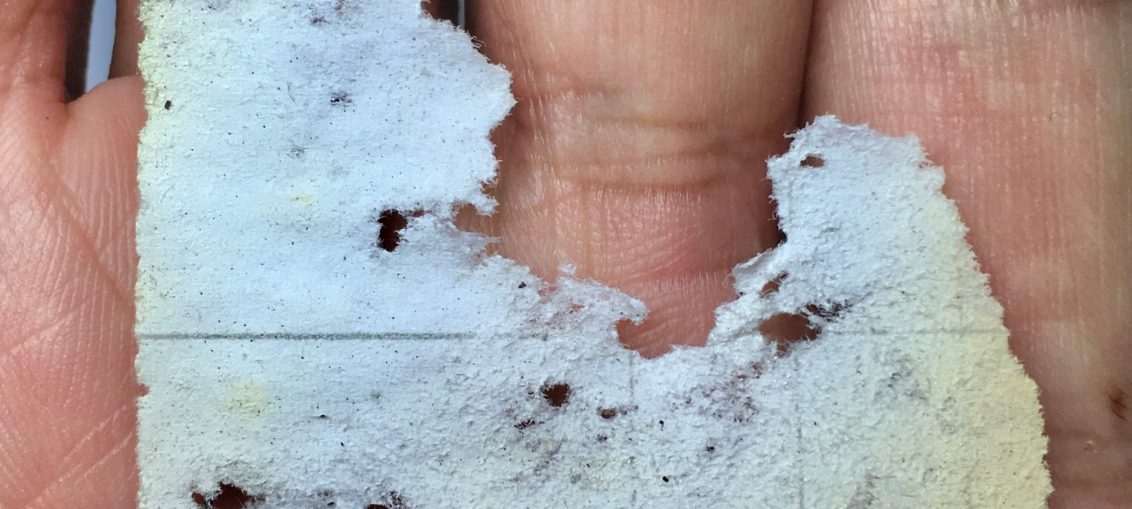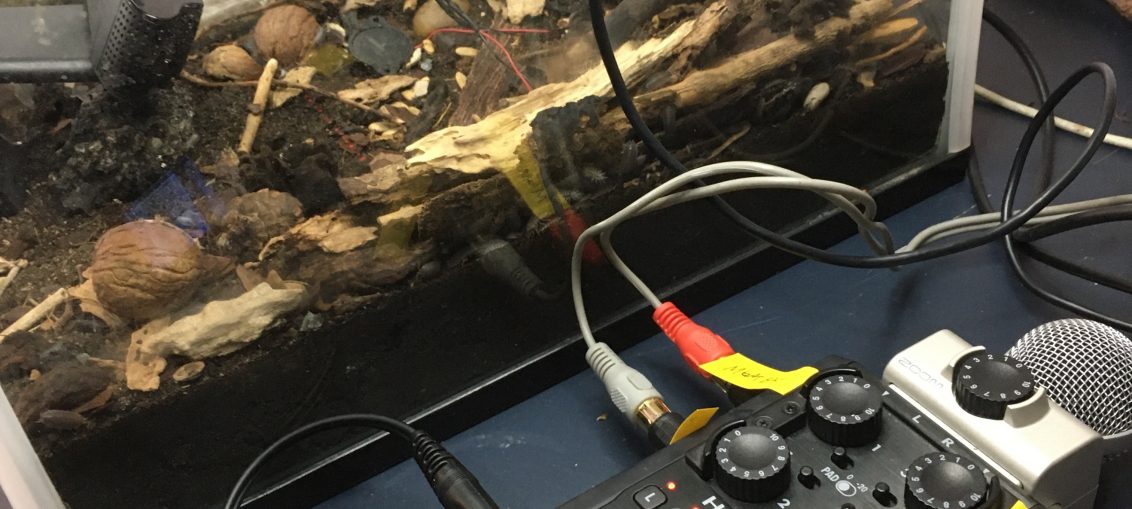Proximity Collective In Residence at Rogue Project Space: 11th April - 5th May 2022 Proximity is a collective of 6 artists interested in the spatial and social elements of practice-as-research (established May 2019). Through a series of in-person residencies across the north of England and regular virtual meet-ups, we have developed our approach of “convivial aesthetics” and provide one another with professional, creative, and emotional support. During our residency at Rogue Project Space we will continue to explore different ways in which our proximity to each other can create new ideas, ways of thinking, and strategies for making and thinking art. View this post on Instagram
Author: antonyhall
24 hour Bioblitz, Highfield Country Park
Sunday 12th June 2022Highfield Country ParkDrop-in events between 10 - 10.30 pm. We need your help! A BioBlitz is an intensive collaborative race against the clock to document as many different living things in a defined area within 24 hours [from huge trees to microorganisms]. Join artists and scientists and other local nature enthusiasts at the Bee Sanctuary, Highfield Country Park. Learn about nature recording identifying plants and animals, and help contribute to scientific research. Bring your phone to take photos, download the iNaturalist app and make an account. Everything you record on the 12th of June in Highfield park will count towards our Bioblitz event database. Or just come along and explore Highfield and enjoy nature. 10 am to 4 pm:
Experience in action: Work in Progress
This page has some notes and background info on the activities and experiments we are employing for the Experience in Action project with Body Eyes and Movement (BEAM) Lab at the University of Manchester. As part of my PhD research, I ran a number of workshops on perceptual illusions (all inspired by research at BEAM Lab and conversations with Dr. Ellen Poliakoff who also acted as one of my PhD supervisors) . The workshops often used the Rubber Hand illusion (RHI) and its many variations as a starting point. I gave participants instructions and asked them to experiment with different stimuli materials and arrangements and devise new experiments of their own. I found that observing participants experimenting and playing with ideas,
Maths Art Group
Art & Maths: Imaginary Numbers, the Haptic Sublime and the Art of Solving Problems Annie Carpenter, Anthony Hall, Michelle Harrison, Matthias Heil, Andrew WilsonFrom a mathematician’s point of view, solving a problem is not simply about the end result, it could be about finding a novel or elegant way to get there. The group presents artefacts related to a question they have discussed at length - is solving a new maths problem like setting a new climbing route? They admit to being no closer to answering this question but the journey has been an interesting one.
Biomaterials and future cities
Manchester Art Gallery Easter workshops with Antony Hall and Aled Roberts 6-16/04/22 This was a series of 7 workshops at Manchester Art Gallery as part of the Field Station project. Aled Roberts is a material scientist developing bio-materials made from non-toxic waste products as alternatives to cement that can be used to capture carbon(or even as a building material on mars). Cement and concrete account for 8% of global greenhouse gas emissions. For comparison, the aviation industry accounts for 2.5%. In the workshop, we created and tested new bio-composite materials. Some super-strong materials were invented alongside many explosive failures. This was a fantastic workshop which engaged families, children and adults equally. Many great conversations were had in relation to climate change
Moss walks
During a residency with Gallery Oldham (2021) I worked with bryological (moss) specimens collected from the local area 150 years ago. This inspired a series of meandering walking workshops focused on revisiting and recollecting mosses from my local area. Meandering is a form of walking fieldwork where participants engage in a series of “focused distractions”—activities like collecting, sampling from the environment, and microphotography—to redirect their attention and uncover alternative perspectives. These workshops explore Manchester's post-industrial and regenerated urban spaces. By employing macro photography and ground-level perspectives, we investigated overlooked areas and subtle aspects of the urban environment, encompassing both architectural and biological elements, as well as human and non-human interactions. Participants also collected small samples of moss to create micro-terrariums, serving
BIOBLITZ – Platt Hall
Platt Hall and Garden Open Day Saturday 2nd April Field Station set up outside the wonderful Platt Hall as part of their open day. I invited people to take part in an intensive BIOBLITZ. That is, documenting all living things in the area, from trees to moss and microorganisms. We placed a series of quadrants [square metres] to see where the most biodiverse sites are around the building]. I shared techniques for hunting and documenting creatures and provided ID resources; microscopes and macro-lenses to get close-up views of what we found. All the results were logged throughout the day on iNaturalist. See https://uk.inaturalist.org/projects/field-station-bioblitz-at-platt-hall Images from the BioBitz at Platt Hall and some wildlife recording prep at Debdale park a few
Experience in Action
Notes on basic editing for 360 VR footage
Notes on basic editing of 360 footage from the Rico Theta V using iMovie from immersive experience workshop. Once your films are transferred from the Richo Theta V camera to your device in the app you have two ways to edit this footage. Firstly, using the app to do basic edits and upload directly to youtube, or importing the video to your phone or desktop and then editing it using Imovie or Premier. Here is a basic guide specifically for the Richo Theta V. Use the Theta + APP:The easiest way seems to be to use the Richo theta+ app to do basic edits. From the app., you can share directly to YouTube in 360 VR format. See Richo + tutorial here Export
Revos Ebike Conversion Kit
Thanks to Revolution Works revolutionworks.com for supporting my project with one of these Revos Ebike conversion kits. See my review here when it's done. https://revolutionworks.com/ Field Station is a mobile resource [a bike trailer] used for pop-up interventions and workshops developed as part of a Climate Change Awareness Project With Manchester Art Gallery. As Field Station develops, the trailer structure is getting increasingly heavy [see the work in progress here]. Towing a heavy trailer on the flat is was no problem - but slow going. Luckily for me, sub-urban manchester is relatively flat, but there are a couple of key hills and numerous steep inclines that are particularly challenging. So I decided to look to get some electrical assistance. I didn't want
Field Station
Field Station – trailer design and inspiration…
This page shows some of the motivation, inspiration and design ideas used in the Field Station project, see the work in progress here. Over the last few years, I have been loading my bike with increasingly heavy loads for field research style workshops sometimes in remote locations. More recently I have been mapping my local 'research realm' that I can access from my doorstep by bike, the sub-urban postindustrial outskirts of south manchester, interesting ecological sites, reclaimed rubbish tips, canals rivers and obscure ponds. These are often less picturesque in-between spaces that have been neglected by the local council, often prone to fly-tipping. Middlewood Trust WorkshopUnder the Darkest Sky [Above some more remote areas to which I travelled to by bike with insanely heavy loads of
FIELD STATION [work in progress]
This page documents the process of creating Field Station, from the original concept (a mobile ecological lab towed by bicycle) to the practical details of working through problems in the studio and foraging for materials, to the final result in Mid February 2022 [See workshop details here]. You can see some of the trailer design inspiration here, and details about the e-bike conversion using the Revos Ebike conversion kit here. Field Station [Commision] Field station is designed as a mobile resource used for pop-up interventions and workshops as part of a Climate Change Awareness Project With Manchester Art Gallery. The project aims to raise awareness and enhance perceptions of the unnoticed and sometimes invisible non-human inhabitants of the urban environment. Participants encountering Field Station will be invited
Perception Group exhibit Para-lab Report 2021
para-lab Perception Group: Antony Hall and Ellen Poliakoff.The perception group explore the creative possibilities of re-creating experimental psychology within the context of an expanded [collaborative and interdisciplinary] art practice. The group work with aspects of sensory deprivation and multisensory illusion ( the clay hand illusion, ganzfeld and strange face illusion) which combine touch sound and visual elements. Artefacts include outcomes from the 'Experiments in art and perceptual illusion project' a PhD project by Antony Hall based on collaborative work with experimental psychologist Ellen Poliakoff. The exhibit consisted of workshop editions resources, instructions, diagrams and a collaborative research paper co-authored by Hall and Poliakoff [More information on para-lab report 2021 here...].
The sound of Moss
Recordings of the sound of dry clumps of Moss rehydrating [various species] growing in the woods Alderley Edge, absorbing the moisture from a fine vapour, using hydrophones put into the soil underneath the moss. See https://www.invisibleworlds.ac.uk/ . This is a technique I developed through the bryophytes project at Gallery Oldham. Antony Hall · bio-crust study: Moss rehydration
Moss Map
During a residency with Gallery Oldham (2021) I worked with bryological (moss) specimens collected from the local area 150 years ago. This inspired a series of meandering walking workshops focused on revisiting and recollecting mosses from my local area. Meandering is a form of walking fieldwork where participants engage in a series of "focused distractions"—activities like collecting, sampling from the environment, and microphotography—to redirect their attention and uncover alternative perspectives. The Moss Map serves as a multi-layered, always changing, exploration of experience and memory, documenting a meandering research journey. See Bryophytes project with Gallery Oldham Images from the 'Proximity' exhibition At Abingdon Studios 26 Aug – 16 September 2021. The 'Moss Map' and bottle terrariums were created as part of the bryophytes project
Unfeasible object workshop at Manchester Science Park
Thu, 23 September 202110:00 – 14:00Location: Manchester Science Park, Bright Building, Pencroft Way, Manchester, M15 6GZV During this workshop, you will be guided through several activities and perceptual illusions to focus the senses before building objects for the ‘Clay Hand Experiment’ and the ‘Unfeasible Object’ experiment. The CHI is based on the Rubber hand illusion; only in the CHI and Unfeasible object experiments, participants build their own hand and other non-hand like objects rather than using a replica rubber hand. Using clay, it is possible to distort and manipulate the clay beyond the form of a hand and create different degrees of ‘unfeasible objects’ and attempt to embody these as part of our own body image. The workshop explores the possibility
para-lab report
para-lab invite you to join us as we come together to display and discuss a series of ongoing collaborations between artists and scientists. The report will be presented through artefacts accumulated from the process of collaboration, as well as workshops and a mini-symposium (free) registration on Eventbrite) to contextualise the work. The weekend acts as a marker along the path of long-term, open-ended collaborations and a platform for the participants and the public to get together in real life after so long operating only online. Open to the public: Rogue Project Space, Thursday 23rd September, 6 - 8Saturday 25th September, 11- 5, Sunday 26th September, 12 - 4.
Proximity at Abingdon Studios
PROXIMITY; An enquiry into the spatial and social elements of practice as research. Anne-Marie Atkinson | Ann Carragher | Antony Hall | Jackie Haynes | Rebecca Howard |Sarah-Joy Ford. 26 Aug – 16 Sept* *Window Gallery visible 24/7 *Upper Floor Project Space open Fridays and Saturdays 11-4pm or by appointmentProximity is a collective of 6 artists interested in the spatial and social elements of practice-as-research (est. May 2019). We have met online weekly since lockdown began, and have developed our approach of “convivial aesthetics” in the virtual realm. Through these meetups, we have provided professional, creative, and emotional support for one another – spending more time in proximity to one another, digitally in each other’s homes. Together we have taken part in several residencies, where our proximity
Hydrophone recordings
para-lab : Materials Group workshop
Para-lab workshop 25th April with the Materials group. Material scientist Aled Roberts led a workshop based on his work exploring how new sustainable materials can be created from bio-based waste materials, potentially as a form of carbon capture. He brought some fascinating material samples one of which was created from bone powder, compressed and heated into a hard ivory-like substance that could be machined or sculpted into any shape. The idea of the workshop was to forage for materials in the urban environment, which could then be mashed up and mixed. We collected moss, orange peel tree sap. Aled brought a number of extra materials he had previously experimented with such as marmite baby powder, dried mealworms, and muscle growth powder. The materials were mashed up
Bryology walk with Anthony Gregory
At the beginning of the project with Gallery Oldham, I was given a list of local sites to visit, which would have been popular in the 19th century for collecting bryophytes. I have been collecting my own specimens from these sites, which will then be sent to Anthony Gregory, an expert Bryologist, for formal identification. These will then be sent back to the museum to be catalogued and become part of the museum's collection for posterity. I met up with Anthony for a riverside walk to get a crash course in bryology. We met at Greenbank train station and made our way to a footpath alongside the River Tame. We walked slowly, stopping regularly at tress and venturing down to
Bryophyte Specimens at Gallery Oldham
I wanted to examine samples of moss collected in the local area around the gallery where I have been working amazingly some were 150 years old. I was experimenting with time-lapse films of rehydrating small samples but need better magnification. Moss is stored in these paper envelopes, and if someone has worked with a sample (and rehydrated it) it is dried and returned to the envelope in a smaller paper wrap. I added a couple of my own to the collection, I like to think someone might stumble across these in a hundred years time! See more about the Gallery Oldham Bryophytes project here...
Daisy Nook Country Park
Short 4k walk through woods by River Medlock and canal paths designed as part of the Gallery Oldham Bryophytes project. Daisy Nook is a beautiful woodland following River Medlock, intersected by the old Waterhouses Aqueduct and Hollinwood canal. It has a mixture of woodland paths and gravely wide tracks beside the canal, which are all great for moss. Look out for Liverworts on the muddy banks near the footpath and river. Also, check the fallen trees for different moss. Routplotter.com https://www.plotaroute.com/route/1618255 The walk starts at a car park off the A627 walk into the woods and down to the riverside. Notice the damp stones by the river and many fallen trees with interesting mosses and liverworts. Following the trail, through the woods beside the River Medlock, you
Kinder Downfall
This page has three walks that took place as part of the Gallery Oldham Bryophytes project. Two Loops around Kinder reservoir, starting from Hayfield [with a short 6k and long 14k option] the other from Edale [17k]. Both are challenging walks with plenty of hill climbing. Sturdy shoes, waterproofs and a map are recommended. Both of these walks centre around the River Kinder. Rain falling on the kinder plateau is absorbed into the blanket bog and slowly trickles out into a series of tributaries and gullies which slowly seep through the peat. These conjoin and meander across the plateau toward Kinder Downfall - a rocky outcrop where the river drops into the valley below eventually filtering into Kinder reservoir. In each walk, the diversity
Contouring the boundary – 35mm photographs
Results from the Photography experiments, taken during the Contouring the Boundary Photography walk with Alison Loyd and Glass ball studios
PhD exhibition Launch
The Workshop as Art: Insight Into the Subjective Experience of Perceptual Illusion Through an Expanded Art Practice Exhibition of works submitted in partial fulfilment of the requirements for the Degree of Doctor of Philosophy This virtual exhibition presents a new body of work exploring perceptual illusion and the workshop as a form of art. The workshops explore the effects of simulating illusory experience through combinations of sound, light and touch, as well as sensory deprivation. The workshops highlight the extreme subjectivity of everyday experience and raise some more unusual questions: What is it like to be invisible? What is it like to be outside of our bodies? Or to embody an and entirely unfeasible object? And what is the role of imagination
Moss re-hydration
On Decomposition and Interspecies Collaboration (Work-In-Progress) Various-Authors
A Live feed (the sound of woodlice eating and communicating) as the keynote presentation for the 'Hopsitality' symposium/conference 2021. This text talks about how this came about, and outline the presentation and details of the 'paper' that was produced. As part of 'Hospitality' a residency project with Proximity hosted by the UoC Fine Art writing group, a conference was organised as a final outcome and reflection on the project. The idea was that we would speak about our various practices and explore cross overs concerning the theme of Hospitality. Unfortunately, as the deadline drew near, we found ourselves having to find a keynote speaker at the last minute. At the time, I had been working on some sound recording experiments, listening
The sound of terrestrial Isopods
[the humble woodlouse] On my various moss bothering escapades, I have found myself exploring shady riverbanks of the Medlock, damp brickwork and stones, the crumbling remnants of industrial architecture, canals locks, and old cotton mills. Rummaging around on the forest floor, damp rotten logs the details of tree bark and rocks. Each of these different environments has its own acoustic ecology (or 'eco-acoustic'). Mossy sites seem to have quietness to them, the moss visually muffles and envelops the sharp rocks and chaos of broken sticks. There is also a softness to the sound, like the effect of a fresh snowfall. I decided to take my sound recorder on some of my field trips. When making field recordings, I have to stand perfectly
